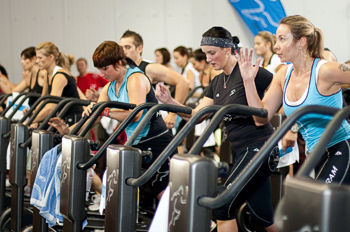 Different physical activities have differing energy requirements, as one might expect. However, these energy requirements rely on a variety of sources of fuel as well as bodily energy systems to supply their needs. Understanding your body’s needs and responses according to the type of physical activity you’re involved in largely determines your overall performance and success.
Different physical activities have differing energy requirements, as one might expect. However, these energy requirements rely on a variety of sources of fuel as well as bodily energy systems to supply their needs. Understanding your body’s needs and responses according to the type of physical activity you’re involved in largely determines your overall performance and success.
Take, for example, the 100 meter sprint and the marathon. The sprint is a brief high intensity event, whereas the marathon is a prolonged endurance test. Both burn up plenty of energy from different sources and by way of different bodily systems. Basic energy comes via the muscles in the form of Adenosine Triphosphate, or ATP. However, stored supplies of ATP for immediate use are limited and must be replenished and resynthesized from other sources via various metabolic paths depending on the intensity of the need.
The energy systems providing the metabolic paths are categorized as either immediate, short or long term and each is based on the resynthesis of ATP either from intramuscular phosphate PCr macronutrients, carbohydrates, lipids and protein or in some form of combination. These fuel sources use varying metabolic pathways in the regeneration of ATP.

In the case of a high intensity exercise such as the 100 meter sprint, which usually lasts about ten seconds and is essentially an anerobic activity with little oxygen consumed, both immediate and short term energy systems are utilized to regenerate ATP and there is a higher reliance on carbohydrates as the main fuel source.
In contrast, a marathon runner a very aerobic activity would be exhausted after only 90 minutes of their 2 to 2.5 hour race if they only used carbohydrates as fuel. Longer term energy needs depend more on the oxidation of lipids namely fats to regenerate their ATP requirements.